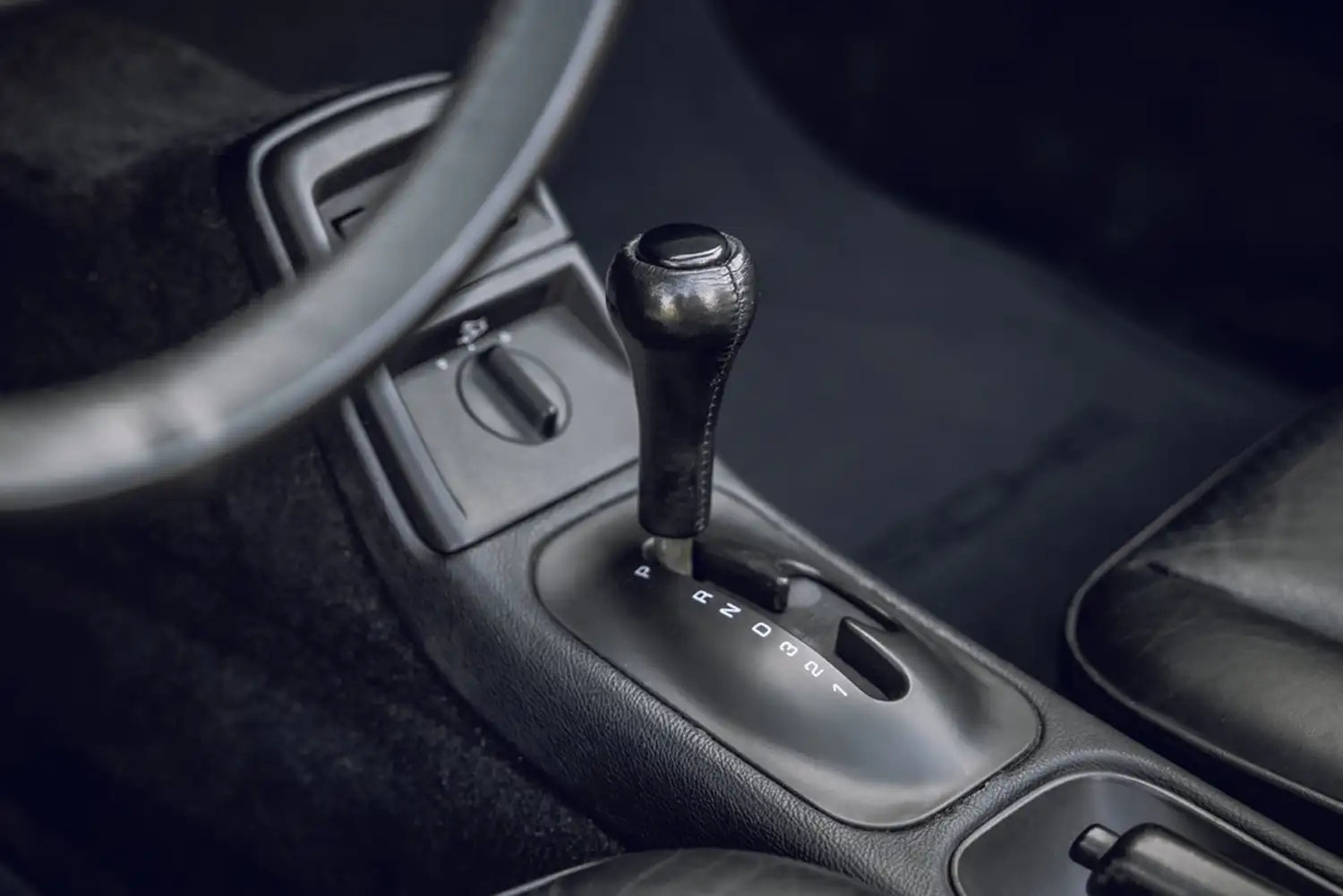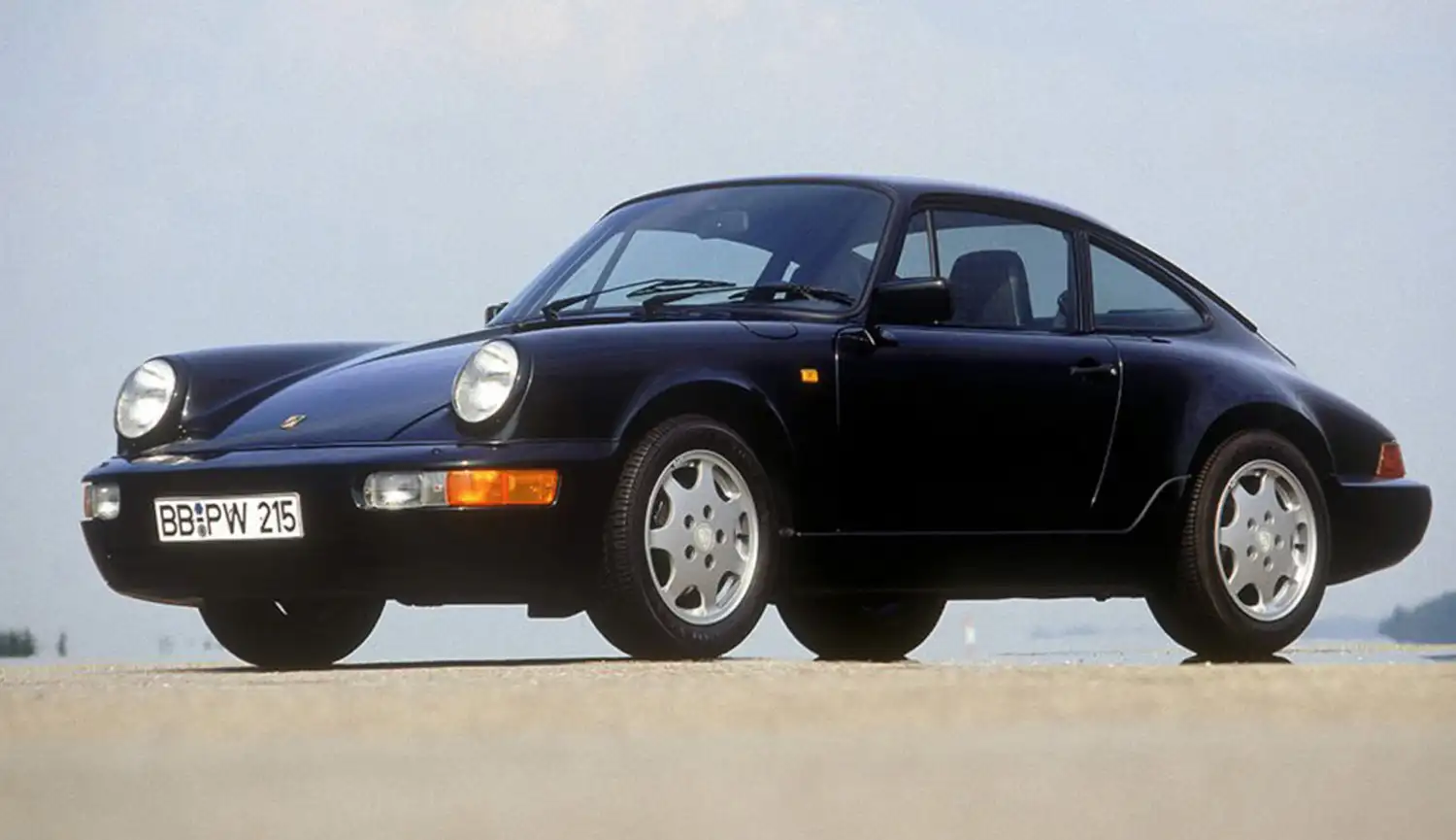
In 1988, after 16 years, Porsche undertook a significant modernization of the 911, introducing the third generation known internally as the 964. This update brought about substantial changes, with almost 85 percent of all parts being newly developed. The result was a 911 that was more aerodynamic, comfortable, and technologically advanced than ever before.
Design and Aerodynamics
The 964’s design was a careful evolution of the classic 911 shape, with a bullish-looking front end and modified sill covers that set it apart from its predecessors. Attention to detail was paramount, with even the rain gutters optimized to improve aerodynamics. The 964 achieved a cd value of just 0.32, making it the most aerodynamic 911 to date.
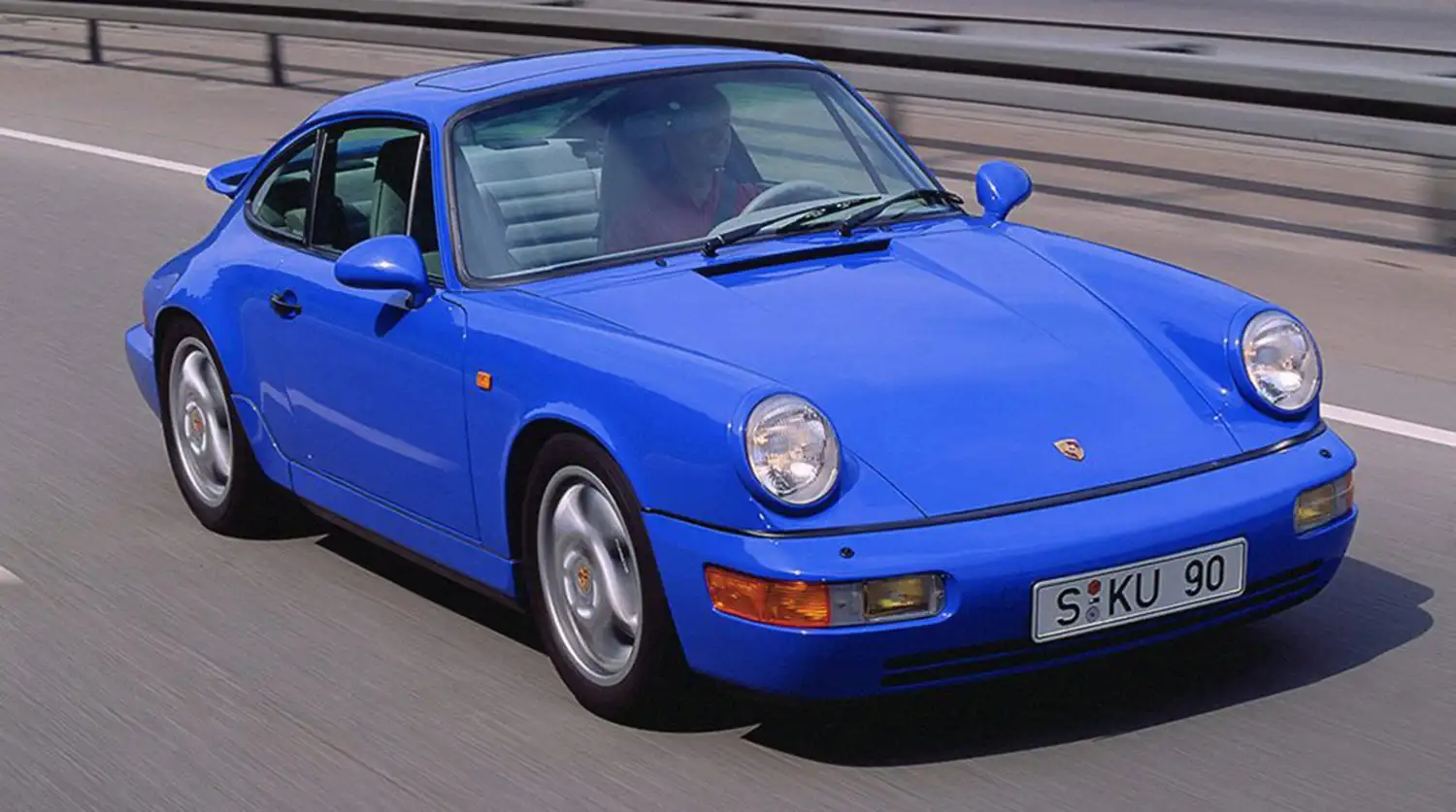
Comfort and Convenience
The 964 was designed to attract a broader customer base, including those seeking everyday drivability and luxury. To this end, Porsche integrated several comfort features:
- Power Steering: For easier maneuverability.
- ABS: Enhancing braking safety.
- More Powerful Heater: Improving cabin comfort in cold weather.
- Central Locking System: Adding convenience.
- Electrically Height-Adjustable Front Seats: Allowing for personalized driving comfort.
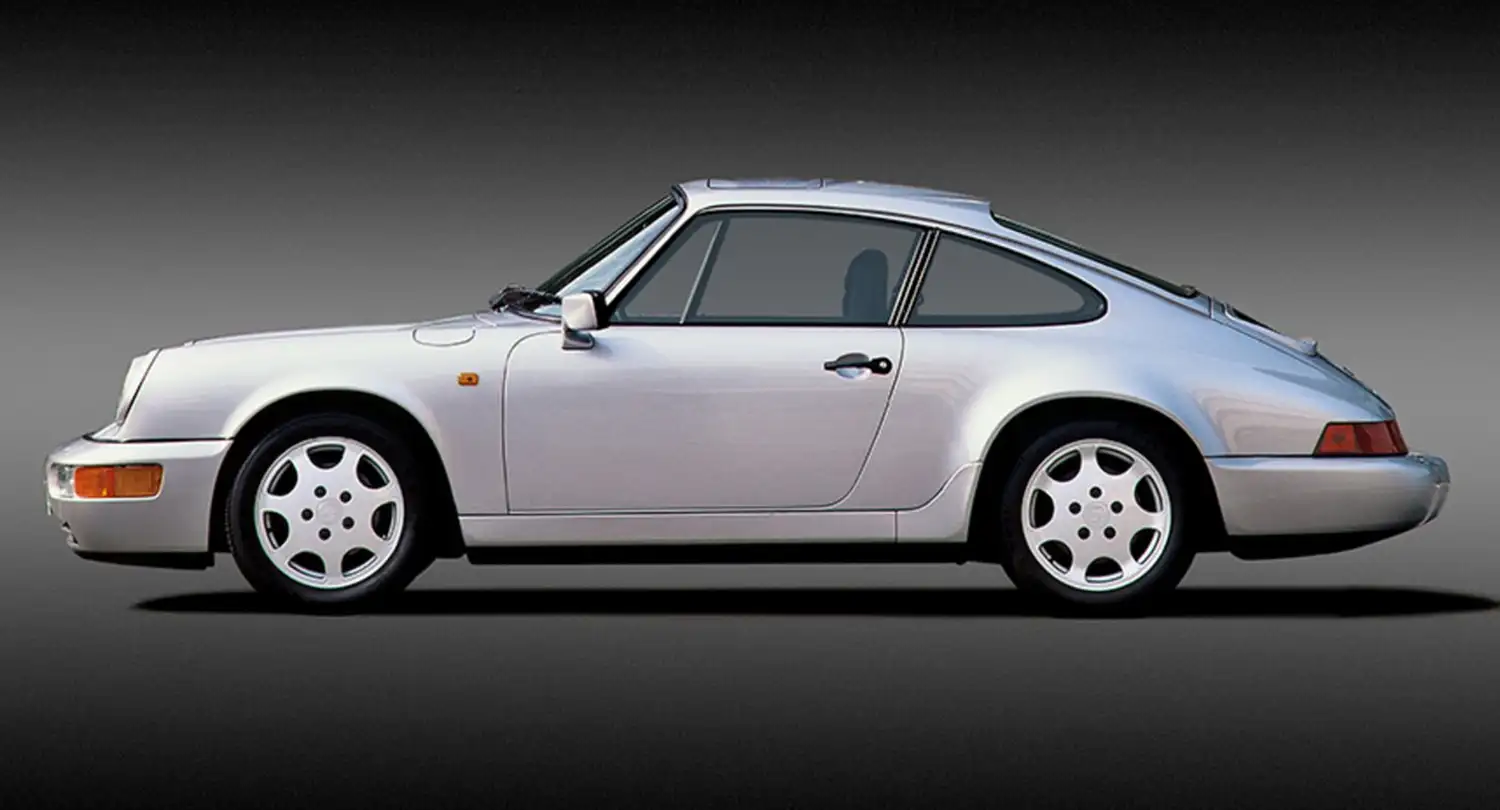
Advanced Engineering
One of the most significant changes in the 964 was the introduction of all-wheel drive in the Carrera 4 models, available from the outset. This system, originally developed for the 959 ultra-high-performance sports car, featured electronically controlled and hydraulically regulated power distribution, ensuring effective power delivery in all conditions.
From 1990, Porsche offered an automatic transmission, a crucial addition for the US market. The suspension system saw a major overhaul, with modern MacPherson struts and coil springs on semi-trailing link rear axles replacing the older torsion bar springs. This new setup provided a more precise and enjoyable driving experience.
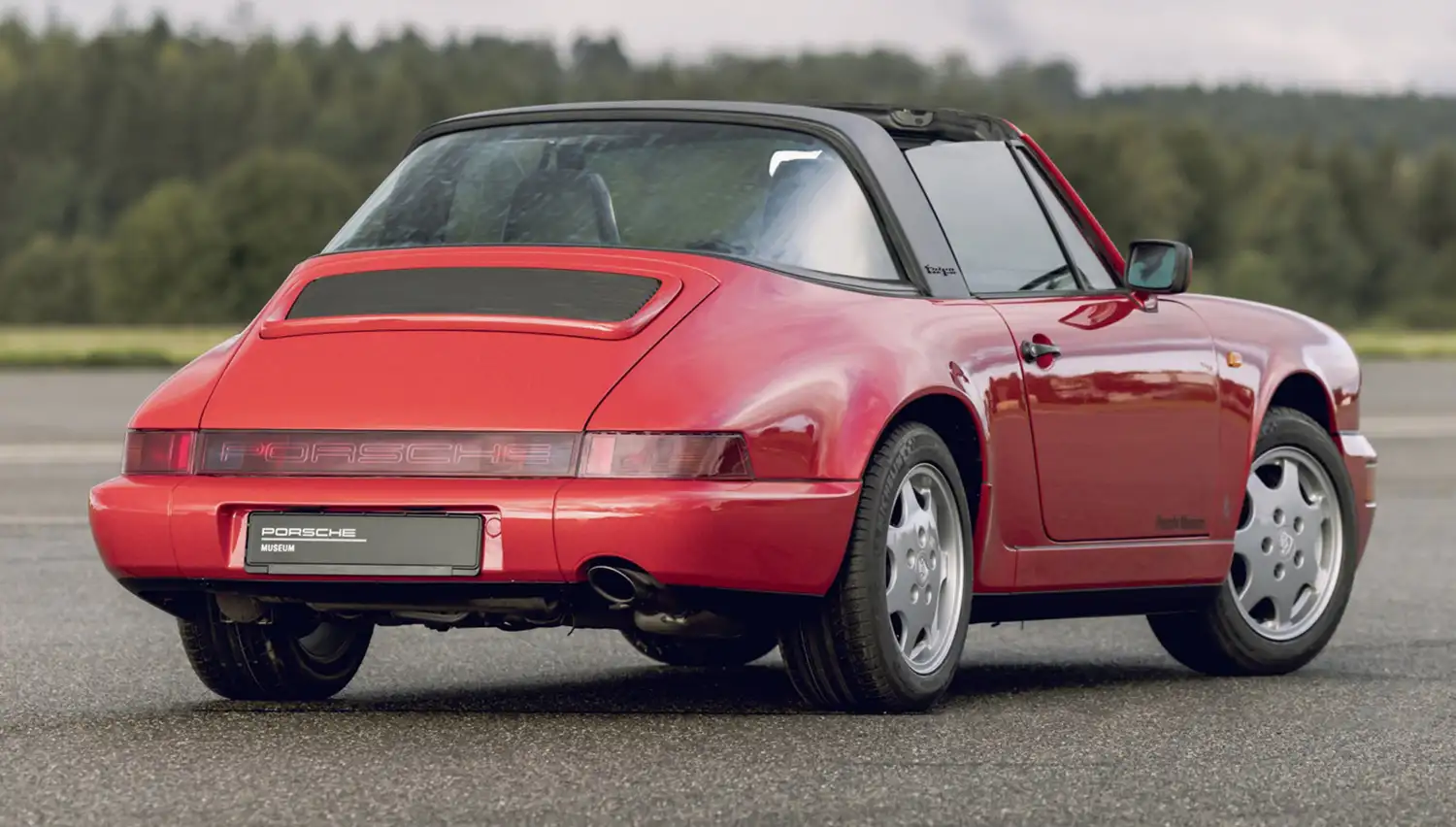
Performance
At the heart of the 964 was the renowned six-cylinder boxer engine, now with several enhancements:
- Dual Ignition: Improving performance and reliability.
- Knock Control: Preventing engine knock for smoother operation.
- Three-Way Catalytic Converter: Reducing emissions.
- Increased Displacement: Now at 3.6 litres, delivering 250 PS.
The newly developed rear spoiler was another highlight. It seamlessly fit into the silhouette of the 964 and extended at speeds over 80 km/h, providing additional downforce and enhancing engine cooling.

Market Reception and Pricing
The all-wheel-drive Carrera 4 launched in August 1988, priced at 114,500 Deutschmarks. A year later, the rear-wheel-drive Carrera 2 was introduced, starting at 103,500 Deutschmarks. Between 1988 and 1994, Porsche produced 63,762 units of the 964-generation 911, solidifying its place as a modern classic.
Simple Shortlist of Specs and Features
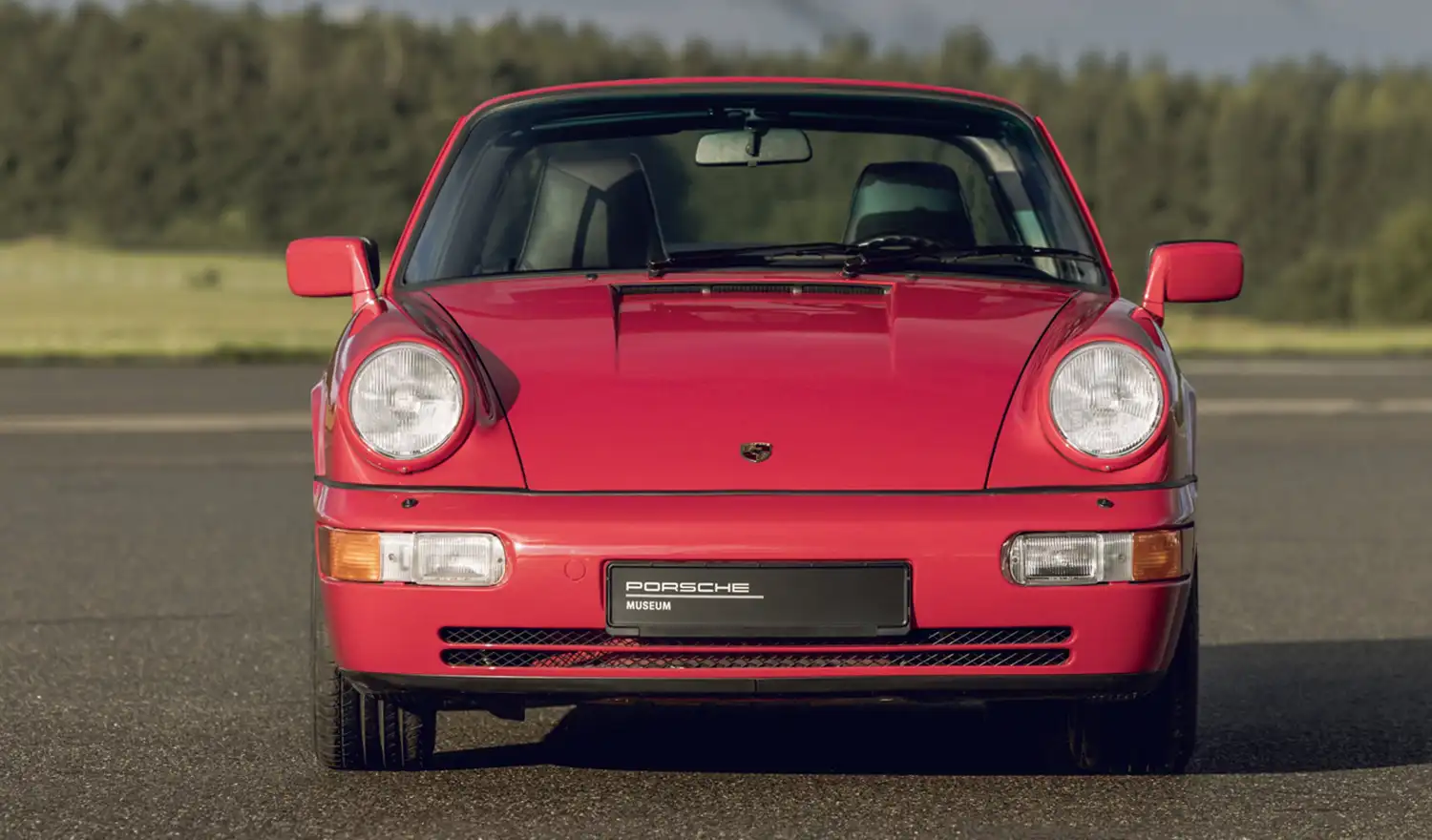
Key Features
- Design Enhancements: Aerodynamic improvements with a cd value of 0.32.
- Comfort Upgrades: Power steering, ABS, enhanced heater, central locking, and electrically adjustable front seats.
- All-Wheel Drive (Carrera 4): Advanced power distribution system for optimal traction.
- Automatic Transmission: Available from 1990, catering to the US market.
- Suspension: Modern MacPherson struts and coil springs for improved handling.
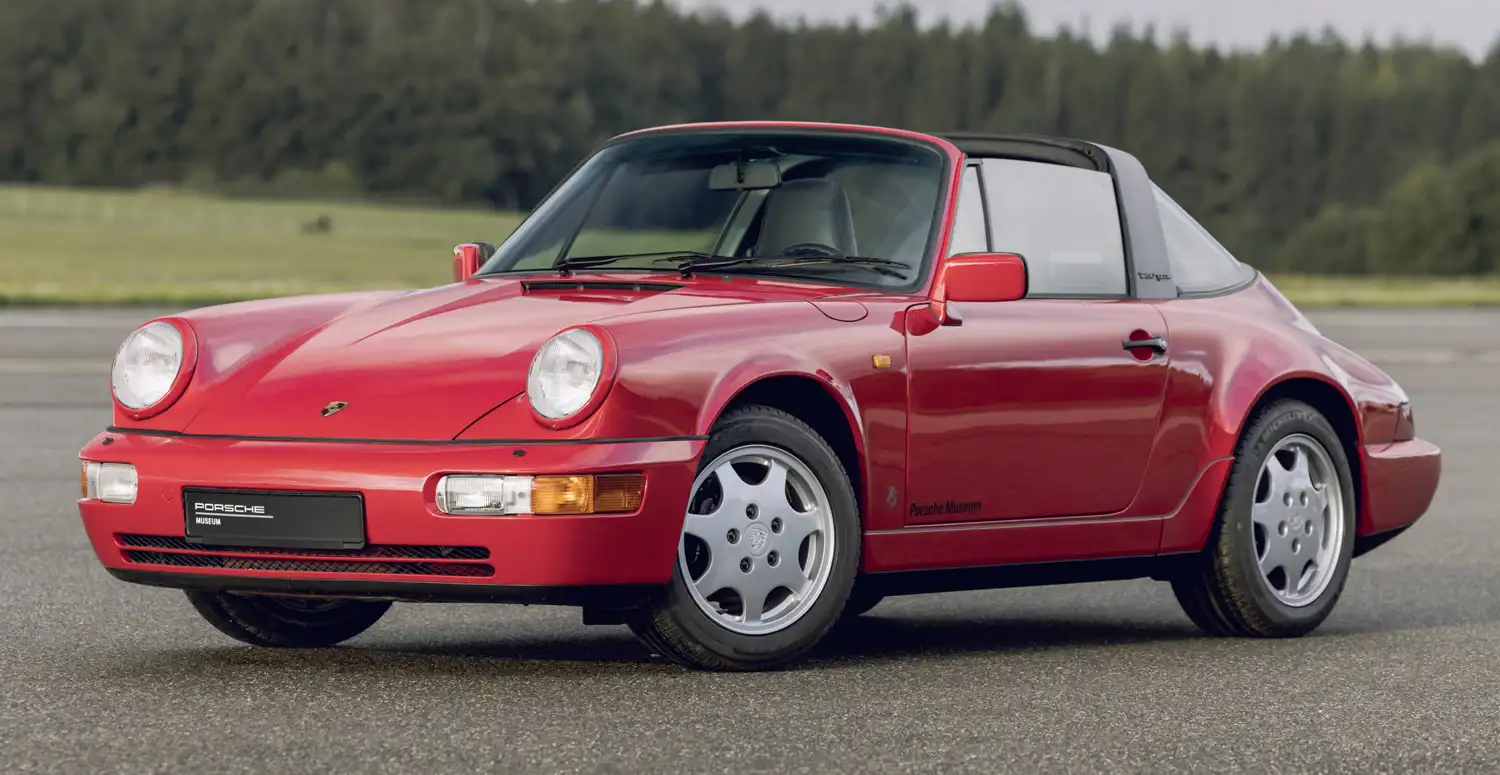
Engine and Performance
- Engine: 3.6-litre six-cylinder boxer.
- Power Output: 250 PS.
- Technological Enhancements: Dual ignition, knock control, and three-way catalytic converter.
- Rear Spoiler: Extends at speeds over 80 km/h for added downforce and cooling.
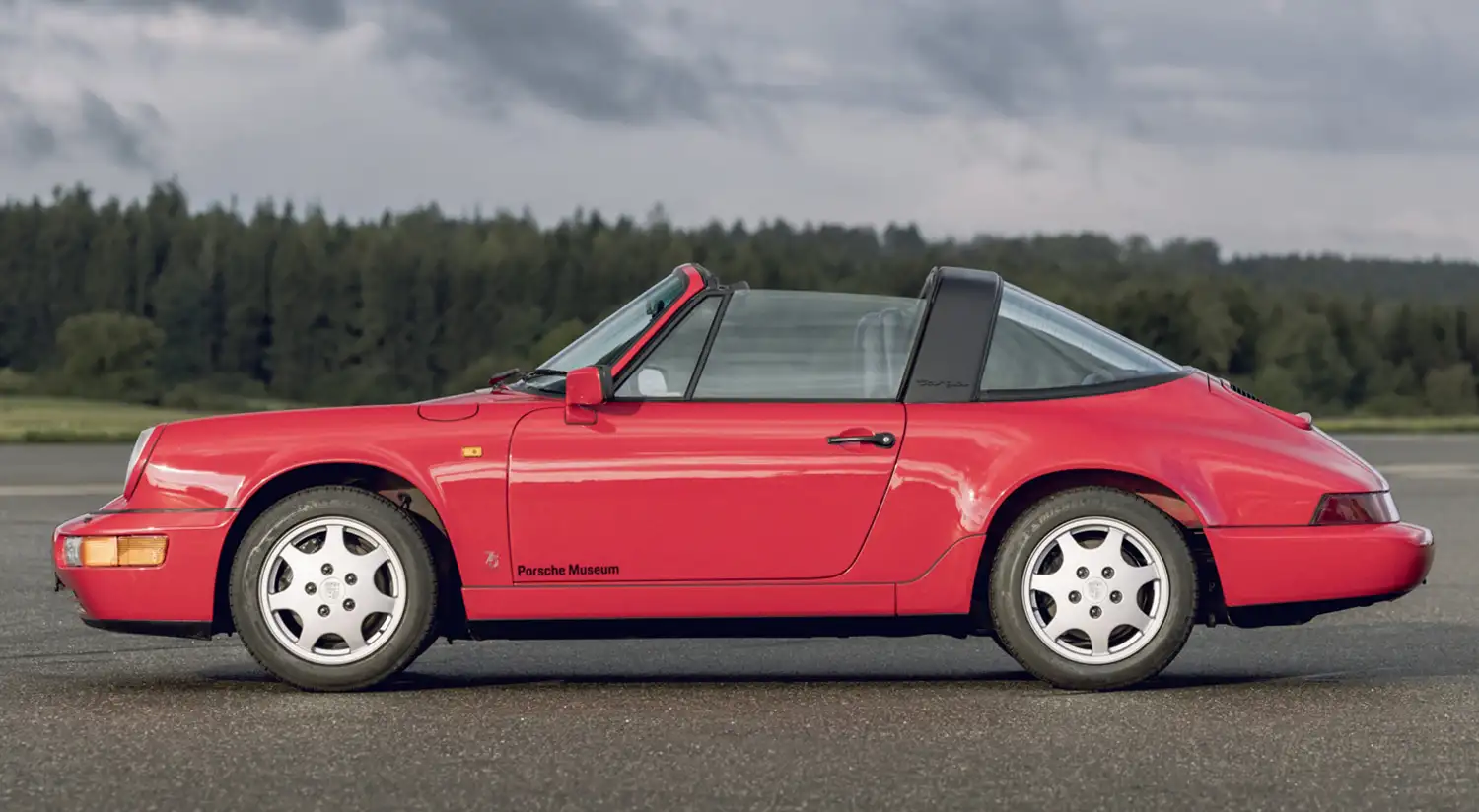
Pricing (at Launch)
- Carrera 4: 114,500 Deutschmarks.
- Carrera 2: 103,500 Deutschmarks.
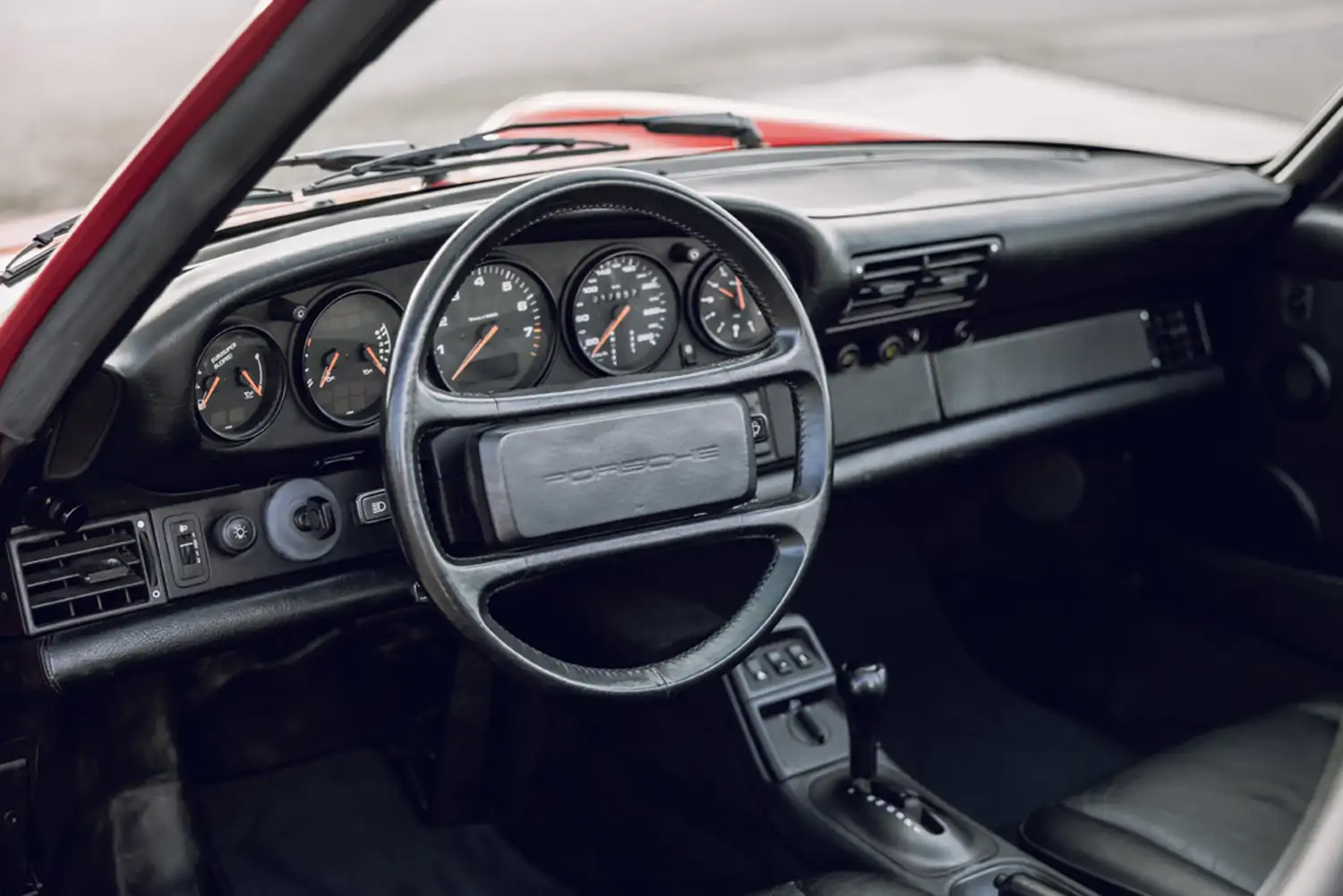
Production
- Total Units Built: 63,762 (1988-1994).
The Porsche 911 (964) combined traditional Porsche performance with modern innovations, making it a standout in the lineage of the iconic 911 series. Its blend of comfort, safety, and advanced engineering ensured its success and enduring legacy.
Source: Porsche
This Article use tools from Chatgpt

